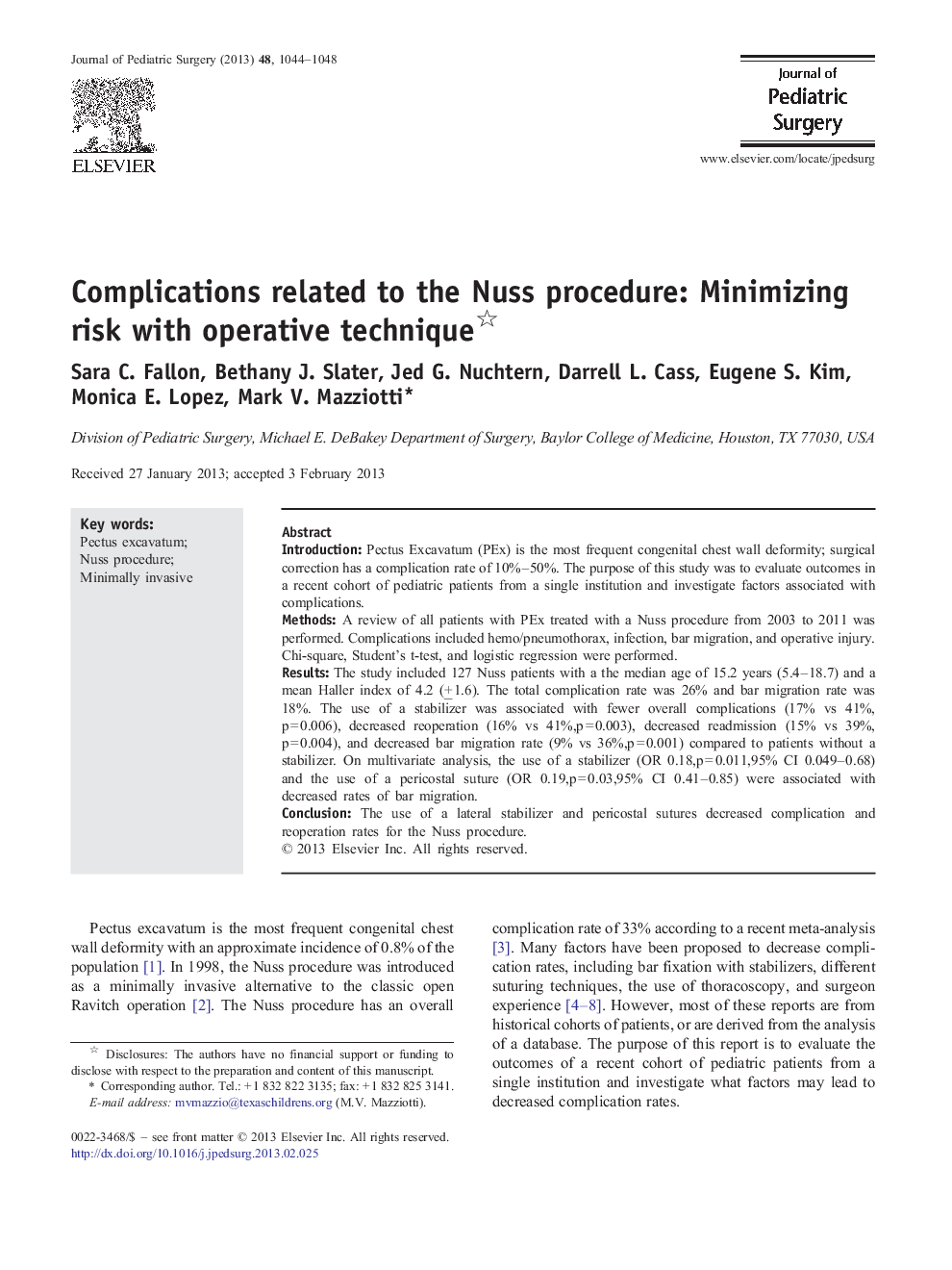| Article ID | Journal | Published Year | Pages | File Type |
|---|---|---|---|---|
| 4156190 | Journal of Pediatric Surgery | 2013 | 5 Pages |
IntroductionPectus Excavatum (PEx) is the most frequent congenital chest wall deformity; surgical correction has a complication rate of 10%–50%. The purpose of this study was to evaluate outcomes in a recent cohort of pediatric patients from a single institution and investigate factors associated with complications.MethodsA review of all patients with PEx treated with a Nuss procedure from 2003 to 2011 was performed. Complications included hemo/pneumothorax, infection, bar migration, and operative injury. Chi-square, Student's t-test, and logistic regression were performed.ResultsThe study included 127 Nuss patients with a the median age of 15.2 years (5.4–18.7) and a mean Haller index of 4.2 (+ 1.6). The total complication rate was 26% and bar migration rate was 18%. The use of a stabilizer was associated with fewer overall complications (17% vs 41%,p = 0.006), decreased reoperation (16% vs 41%,p = 0.003), decreased readmission (15% vs 39%,p = 0.004), and decreased bar migration rate (9% vs 36%,p = 0.001) compared to patients without a stabilizer. On multivariate analysis, the use of a stabilizer (OR 0.18,p = 0.011,95% CI 0.049–0.68) and the use of a pericostal suture (OR 0.19,p = 0.03,95% CI 0.41–0.85) were associated with decreased rates of bar migration.ConclusionThe use of a lateral stabilizer and pericostal sutures decreased complication and reoperation rates for the Nuss procedure.
